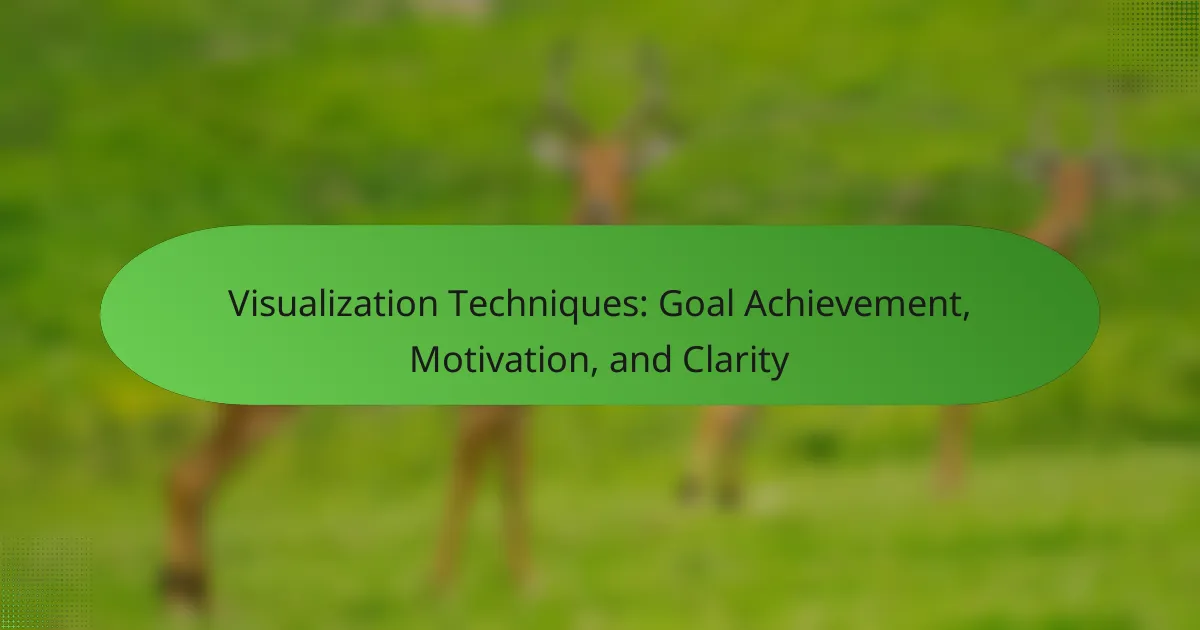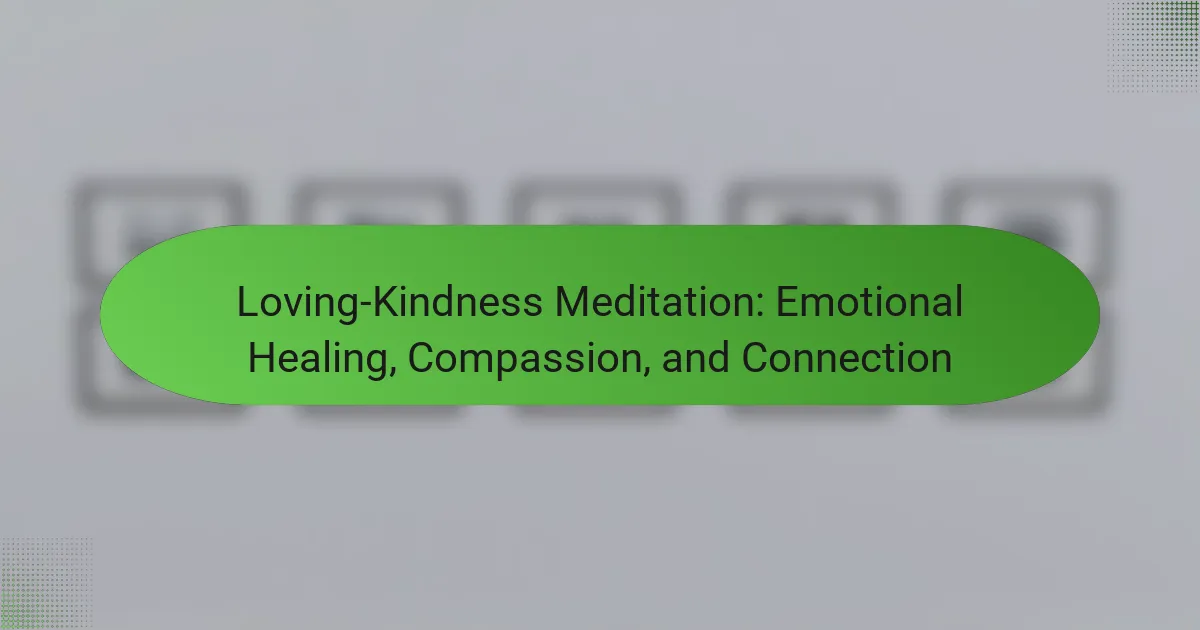Visualization techniques are powerful tools that can enhance goal achievement by fostering a clear mental image of success. By regularly picturing desired outcomes, individuals can boost their motivation and clarify their objectives, ultimately reinforcing their commitment to reaching those goals.

How Can Visualization Techniques Help Achieve Goals?
Visualization techniques can significantly aid in achieving goals by creating a mental image of success, which enhances focus and motivation. By regularly picturing desired outcomes, individuals can clarify their objectives and reinforce their commitment to reaching them.
Enhances focus on objectives
Visualization sharpens focus on specific goals by allowing individuals to mentally rehearse their desired outcomes. This practice helps to filter distractions and prioritize actions that align with their objectives. For instance, an athlete might visualize winning a race, which keeps them concentrated on their training regimen.
To enhance focus, set aside time daily for visualization. Consider using a quiet space to create a vivid mental picture of your goals, incorporating sensory details to make the experience more immersive.
Increases motivation and commitment
Visualizing success can boost motivation by reinforcing the emotional connection to goals. When individuals see themselves achieving their objectives, they are more likely to feel inspired to take action. This emotional engagement can transform abstract goals into tangible aspirations.
To maintain motivation, visualize not just the end result but also the steps needed to get there. Regularly revisiting these images can strengthen commitment, especially during challenging times when motivation may wane.
Improves clarity in planning
Visualization aids in clarifying the steps necessary to achieve goals. By picturing the process, individuals can identify potential obstacles and devise strategies to overcome them. This foresight can lead to more effective planning and execution.
To improve clarity, create a visual roadmap of your goals. Break down larger objectives into smaller, manageable tasks and visualize each step, ensuring you understand how they connect to your ultimate aim.
Boosts confidence in execution
Regular visualization can enhance self-confidence by familiarizing individuals with the experience of success. When people visualize themselves succeeding, they are more likely to approach real-life situations with a positive mindset and belief in their abilities.
To boost confidence, practice visualization before high-stakes situations, such as presentations or competitions. Picture yourself performing well, which can help reduce anxiety and improve overall performance.

What Visualization Techniques Are Most Effective?
Effective visualization techniques enhance goal achievement, motivation, and clarity by providing clear mental images of desired outcomes. These techniques help individuals focus on their objectives and create actionable pathways to success.
Vision boards
Vision boards are visual representations of goals, typically created by collaging images, words, and quotes that resonate with personal aspirations. They serve as constant reminders of what one wants to achieve, making the goals feel more tangible and motivating.
To create a vision board, gather materials like magazines, scissors, glue, and a poster board. Spend time reflecting on your goals, then cut out images and phrases that represent those ambitions. Arrange them on the board in a way that inspires you, and place it somewhere visible to reinforce your focus daily.
Mind mapping
Mind mapping is a brainstorming technique that visually organizes information around a central concept. It helps clarify thoughts and relationships between ideas, making it easier to plan and achieve goals.
To create a mind map, start with a central idea in the middle of a page and branch out with related concepts, using lines to connect them. This technique can be particularly useful for breaking down larger goals into manageable tasks, ensuring that all aspects are considered.
Guided imagery
Guided imagery involves using mental visualization to create a vivid picture of achieving a goal, enhancing motivation and focus. This technique can be particularly effective in reducing anxiety and improving performance by mentally rehearsing success.
To practice guided imagery, find a quiet space and close your eyes. Visualize yourself successfully achieving your goal, engaging all your senses to make the experience as real as possible. Regular practice can help reinforce positive outcomes and boost confidence.
Data visualization tools
Data visualization tools transform complex data sets into visual formats, making it easier to understand trends and insights. These tools are essential for tracking progress toward goals and making informed decisions based on data.
Popular data visualization tools include Tableau, Microsoft Power BI, and Google Data Studio. When selecting a tool, consider factors such as ease of use, integration with existing systems, and the specific types of visualizations you need, such as charts, graphs, or dashboards.

How to Implement Visualization Techniques for Motivation?
To effectively implement visualization techniques for motivation, focus on creating vivid mental images of your goals. This practice enhances clarity and strengthens your commitment, making it easier to stay motivated and achieve desired outcomes.
Set clear and specific goals
Defining clear and specific goals is crucial for effective visualization. Instead of vague aspirations like “I want to be fit,” specify “I want to run a 5K in under 30 minutes.” This clarity helps you visualize the exact outcome you desire.
Consider breaking larger goals into smaller, manageable milestones. For instance, if your ultimate goal is to lose weight, set monthly targets for weight loss or fitness levels. This approach keeps you focused and motivated as you celebrate each achievement.
Create a daily visualization routine
Establishing a daily visualization routine can significantly enhance your motivation. Dedicate a few minutes each day to visualize your goals in detail, imagining the steps you need to take and the feelings associated with achieving them.
Choose a consistent time and place for your routine, such as first thing in the morning or before bed. This consistency helps reinforce your commitment and makes visualization a natural part of your daily life.
Use affirmations alongside visuals
Incorporating affirmations with your visualization practice can amplify its effectiveness. Positive affirmations, such as “I am capable of achieving my goals,” help reinforce your belief in your abilities and create a positive mindset.
Combine affirmations with your visualizations by repeating them while picturing your success. This dual approach strengthens your motivation and helps you overcome self-doubt, making it easier to pursue your goals with confidence.

What Are the Benefits of Visualization for Clarity?
Visualization enhances clarity by allowing individuals to see their goals and processes more vividly, leading to better understanding and focus. This technique helps in organizing thoughts and making complex ideas more manageable.
Clarifies thought processes
Visualization helps clarify thought processes by transforming abstract ideas into concrete images. By picturing goals and steps, individuals can break down complex tasks into simpler components, making it easier to understand what needs to be done.
For example, creating a mind map can visually represent relationships between different ideas, allowing for clearer connections and insights. This method can be particularly useful when planning projects or setting personal objectives.
Enhances decision-making
Using visualization techniques can significantly enhance decision-making by providing a clearer picture of potential outcomes. When individuals visualize different scenarios, they can better assess risks and benefits, leading to more informed choices.
Consider using flowcharts to outline decision paths. This visual representation allows you to weigh options and foresee consequences, which can be especially beneficial in business settings or when making significant life changes.
Reduces anxiety and uncertainty
Visualization can effectively reduce anxiety and uncertainty by creating a sense of control over future events. By mentally rehearsing situations, individuals can prepare themselves for challenges, which can alleviate stress and boost confidence.
For instance, athletes often visualize their performance before competitions to calm nerves and enhance focus. Similarly, professionals can visualize presentations or meetings to feel more prepared and less anxious about the outcomes.

What Criteria Should Be Considered When Choosing Visualization Tools?
When selecting visualization tools, consider user-friendliness, compatibility with existing systems, and the specific needs of your audience. The right tools should enhance clarity and motivation while being easy to use and integrate.
User-friendliness
User-friendliness is crucial for effective visualization tools. A tool that is intuitive allows users to focus on their goals without getting bogged down by complex features. Look for interfaces that are clean and straightforward, enabling quick access to essential functions.
Consider the learning curve associated with each tool. Tools that require minimal training can save time and resources, making them ideal for teams with varying levels of technical expertise. For example, platforms like Canva or Tableau offer user-friendly designs that cater to beginners while still providing advanced features for experienced users.
Additionally, ensure that the tool offers adequate support and resources, such as tutorials or customer service. This can significantly enhance user experience and satisfaction, helping users to effectively leverage the tool’s capabilities for their visualization needs.



